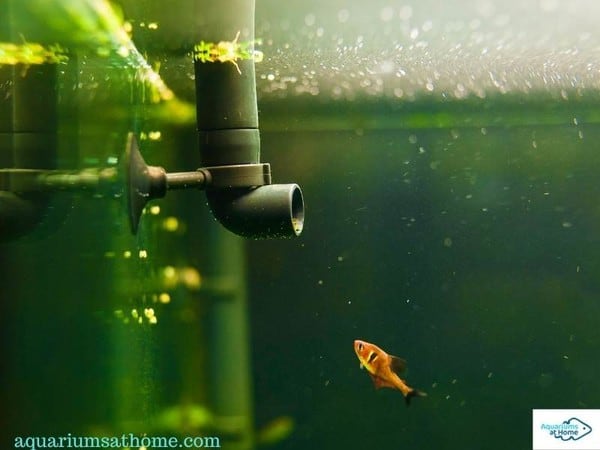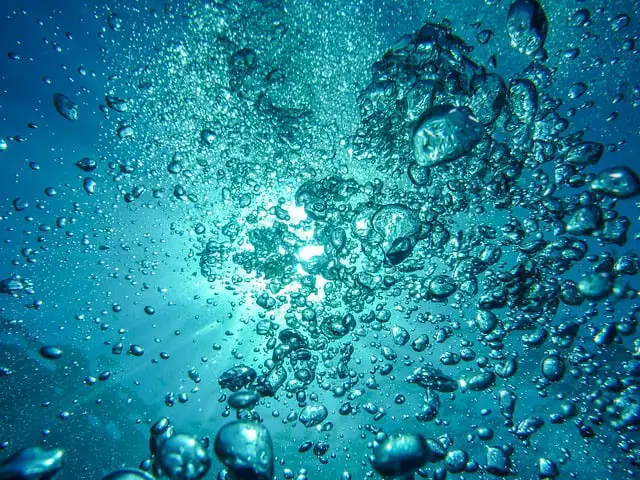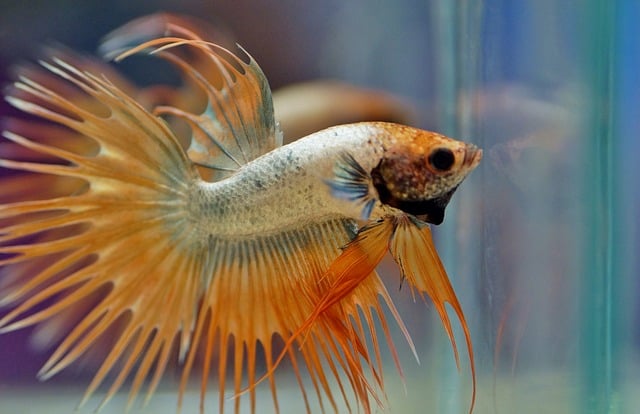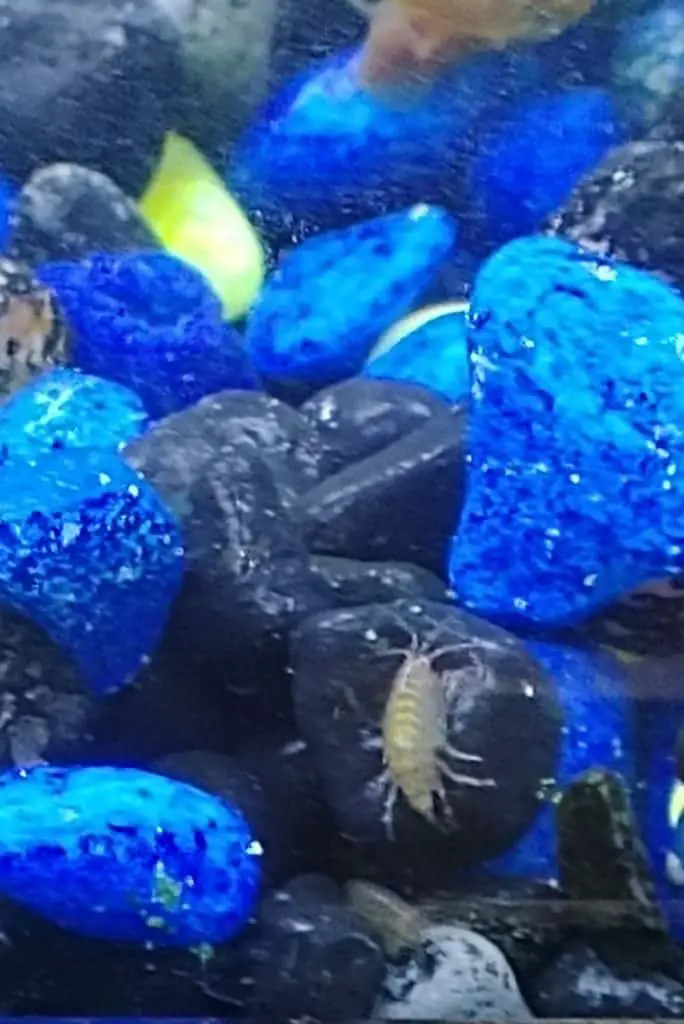A safe aquatic environment is vital to the health and longevity of your fish. As an aquarium hobbyist, you’ve likely heard about nitrates and their effects on captive fish. Although nitrate itself isn’t as lethal as ammonia or nitrite, over time – if left unchecked – it can negatively impact your tank inhabitants.
Keeping your aquarium clean is the best way to lower nitrate levels in both freshwater and saltwater aquariums. Performing regular partial water changes along with adding cycled filters and using water conditioners are all effective at keeping nitrate levels in check.
Now that you know nitrate levels in aquariums should be kept to a minimum, let’s explore this topic in more detail. I’ll explain what so-called ‘safe’ nitrate levels are, how to recognize the signs of nitrate poisoning in fish, and how to safely and effectively lower nitrate levels in both freshwater and saltwater tanks. I’ll also explain why you’d want to increase nitrates in an aquarium and how you’d go about it.
So, if you’re learn more about keeping your aquarium clean and safe for all aquatic inhabitants, then let’s get to it!
What are Safe Nitrate Levels in an Aquarium (Freshwater and Saltwater)?
‘Safe’ nitrate levels in an aquarium are different for freshwater and saltwater tanks. Freshwater tanks can sustain a higher amount of nitrate than saltwater tanks. While most marine tanks are considered safe for fish with a low nitrate reading, reef tanks require a reading as near ‘zero’ as possible to be safe.
The ideal nitrate range for freshwater tanks is somewhere between 5 and 10 ppm (parts per million). While aquarium hobbyists often run their tanks at the slightly higher end, anything over 20 ppm is too much and will negatively affect your fish in the long run.
What are Symptoms of Nitrate Poisoning in a Fish Tank?
Nitrate poisoning is what occurs when fish are exposed to high levels of nitrate (a chemical compound) over a long period of time. Should nitrate levels ‘spike’ suddenly, it can take a mere 24 hours to cause death. The most common symptoms of nitrate poisoning in fish include the following:
- Loss of appetite and refusing to eat.
- Lethargy and listlessness – swimming slowly and carelessly about the tank.
- Loss of equilibrium – appearing ‘dazed and confused’.
- Laying motionless along the substrate at the bottom of the tank.
- Floating lifelessly neat the surface at the top of the tank.
- Hiding among rocks or plants for long periods of time.
- Rapid gill movements accompanied by high respiration rates.
- Pulling in of fins or curling head towards tail.
While it’s possible for fish to recover from nitrate poisoning – provided the physical damage isn’t too severe, that is – they’re less likely to tolerate nitrates and will be highly sensitive to rising nitrate levels. Therefore, it’s imperative that the tank is kept as clean and safe as possible following recuperation.

How to Lower Nitrate Levels in a Freshwater Aquarium?
To effectively reduce nitrate levels in a freshwater aquarium, consider the following options:
Adding Live Plants
A heavily planted tank is a natural, yet effective way to reduce nitrate levels in an aquarium. Plants absorb toxins such as nitrate, nitrite and ammonia from the water and keep it safe for fish. The best aquatic plants for this job include duckweed, water sprite, and hornwort.
Adding Cycled Filters
Nitrate-absorbing filter media is great at removing dissolved nitrate from aquarium water but must be used in conjunction with partial water changes to keep the problem from reoccurring. Forgetting to clean or replace tank filters regularly will ultimately lead to an increase in nitrate levels.
Using Water Conditioner
Adding water conditioner to tap water helps neutralize and prevent nitrate build-up in an aquarium when used with the proper media. It also works to eliminate harmful chlorine which can kill fish. Water conditioner should be used every time you do a partial water change or top up your tank.
Check out these water conditioning products available online through Amazon.
Doing Water Changes
Performing weekly partial water changes (with dechlorinated water) is a highly effective way of reducing nitrate levels in an aquarium. Removing up to 25% of the existing tank water and replacing it with clean, treated water works to significantly lower toxic compounds and keep the environment safe for fish.
Keeping the Tank Clean
Regular maintenance such as removing decaying plants, leftover food and excess waste goes a long way in keeping nitrate levels down in a community tank environment. Vacuuming the substrate monthly with an aquarium siphon and cleaning the tank walls with an algae scrubber is also recommended.
How to Lower Nitrate Levels in a Saltwater Aquarium?
To safely lower nitrate levels in a saltwater aquarium, consider the following alternatives:
Using a Refugium
Setting up a refugium is highly recommended for controlling nitrate levels in a saltwater aquarium. This device can be put into a sump, placed inside a back filtration system, or hung onto the tank itself. It also aids in regulating water
pH as well provides a home for live foods to breed.
Introducing Live Rock
Since live plants aren’t usually an option for saltwater aquariums, adding live rock helps to reduce nitrate levels in marine and reef tanks. Live rock provides an area for aerobic bacteria to collect and process ammonia/nitrites while promoting the growth of anaerobic bacteria that helps process nitrates.
Using Aquarium Supplements
When aquarium supplements like nitrate removers or biological enhancers are added to saltwater tanks, they help to effectively reduce toxic chemical compounds. Liquid water conditioners work in tandem with protein skimmers and other filtration equipment to break down and eliminate dissolved nitrates.
Adding Bio-pellets to Media Filers
Bio-pellet filer media has been reported by aquarium hobbyists to have great success at lowering both nitrate and phosphate levels in both marine and reef tanks. These ‘beads’ or pellets are used with an up-flow reactor and act as a source of carbon to control nutrient overgrowth.
Check out these bio-pellet products available online through Amazon.
Performing ‘Deep’ Water Changes
Regular cleaning and maintenance are key to reducing nitrate levels in a saltwater tank. Doing more frequent and larger partial water changes (between 30% and 40%) is recommended. Using RO (reverse osmosis) or filtered water with marine salt mix is strongly encouraged for all water changes or top-ups!
Other ways to significantly reduce nitrate levels in marine or reef tanks include making sure not to overfeed or overstock the tank as well as performing regular maintenance duties like scrubbing down the tank walls to remove excess algae and vacuuming up decaying matter along the substrate.
Does Macroalgae Lower Nitrates?
Macroalgae works to reduce nitrate and phosphate levels in saltwater aquariums. It acts as a natural form of filtration and helps keep the tank water safe for all aquatic inhabitants. It also provides a food source for some species of marine fish.
There are several types of macroalgae available to saltwater aquarium hobbyists including Hawaiian Halimeda plant, chaetomorpha algae, and maiden hair algae. They come in a variety of shapes and colors and offer excellent options for those looking to aquascape or decorate their marine tank.
How to Increase Nitrates in a Fish Tank (and Why)?
The best way to increase nitrates in an aquarium is to dose it regularly with KNO3 or potassium nitrate. You must do so carefully and cautiously, however. The exact amount must be measured accurately and added appropriately otherwise, you run the risk of toxifying your fish tank.
The only reason you’d want to add nitrates is if you have a heavily planted tank. Nitrates acts as a food source for aquatic plants. Plants absorb nitrates and use them to grow. Healthy, full-grown aquatic plants, in turn, help control or reduce algae overgrowth, which can spike nitrate levels in an aquarium.
Check out these potassium nitrate products available online through Amazon.
Conclusion
To conclude, keeping your tank as clean as possible is the best way to prevent nitrate levels from spiking in both freshwater and saltwater aquariums. Partial water changes are essential as well as adding cycled filters and using water conditioners.
I hope this article has provided you with the information you seek regarding how to lower nitrate levels in your fish tank. Thanks for reading and best of luck with your aquarium hobby.
Related Posts
What are the Signs of Ammonia Stress in a Fish Tank?
How Do You Cycle an Aquarium – The Nitrogen Cycle
Can You Add a Water Conditioner While Fish Are in The Tank?
Why is My Saltwater Tank Cloudy?






